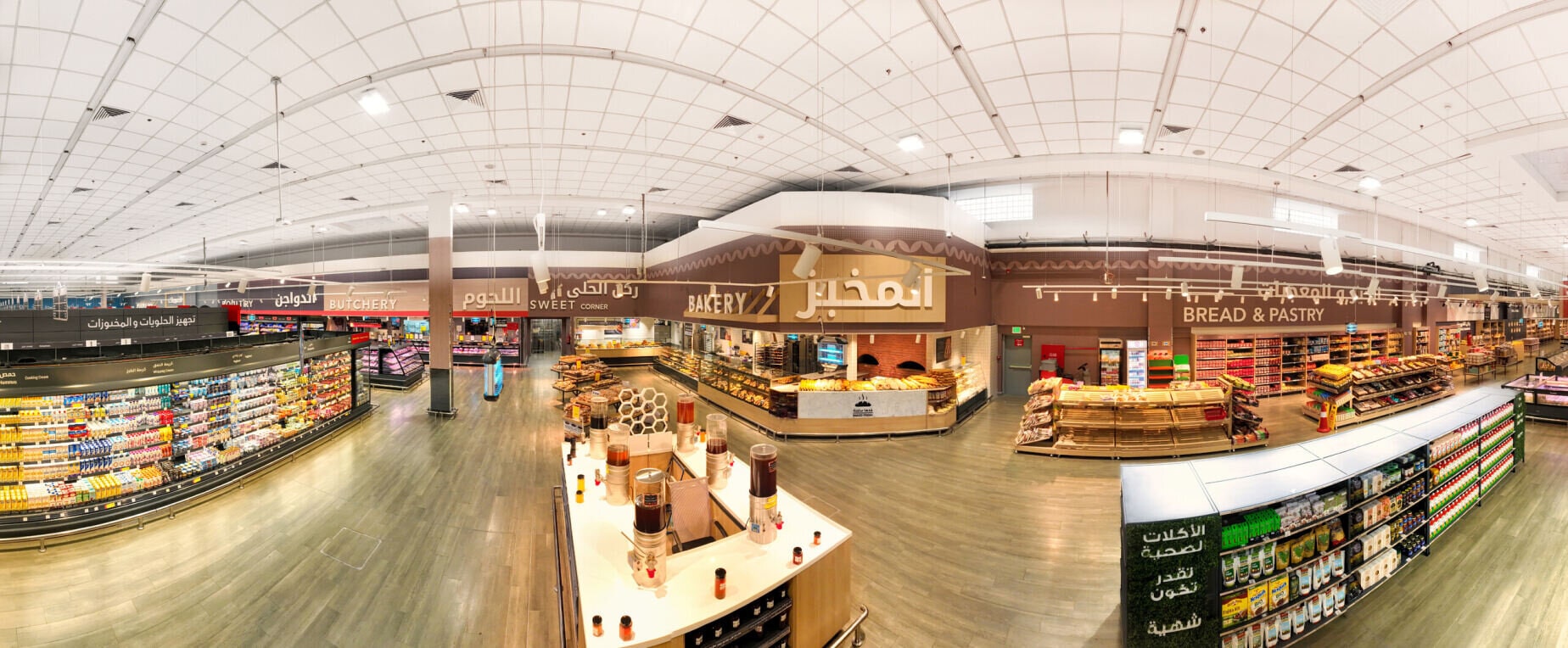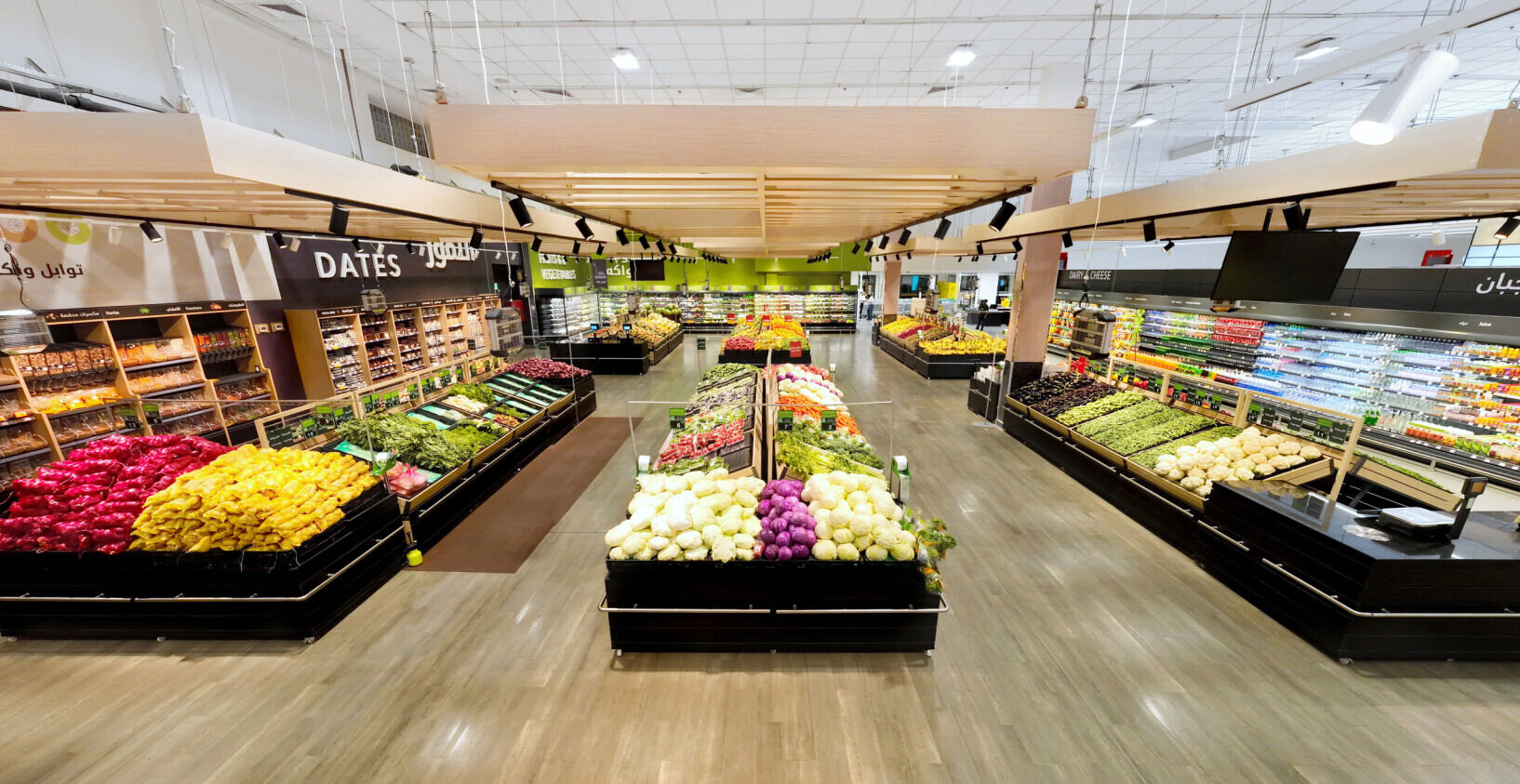Piyush Chowhan, Chief Information Officer, Panda Retail Company, Savola Group, Saudi Arabia speaks about technology in retail, its evolution, its challenges and much more…
New Delhi: With over two decades of experience in the supermarket, hypermarket and fashion retail, Piyush Chowhan is a tech enthusiast and an avid follower of cutting-edge technologies like Artificial Intelligence (AI). His areas of specialisation are digital-enabled operations that help enhance the customer journey.
After his roles with retail majors like Tesco, Walmart, Lulu Group and Arvind Fashion, Chowhan is now on a journey to enhance, understand and drive change in the Middle East’s biggest country—the Kingdom of Saudi Arabia—backed by insights and experience in digital and tech transformations.
In an exclusive interview with IndiaRetailing, Chowhan talks about his learnings, changing retail dynamics and areas witnessing improvements.
Edited Excerpts…
How would you explain the evolution of retail in terms of technology?
If we analyse the last 100 years of retail, the early 1900s witnessed the bulk of mom-and-pop store concepts, with local connections and personalised service from individuals who knew and catered to local customers. The era then shifted to supermarkets and large hypermarket formats, emphasizing self-service for cost efficiency. The rise of digital commerce allowed people the luxury of avoiding physical stores, but the limitations led to the emergence of omnichannel retail.
Currently, we are in the early stages of the true omni-channel era, where personalisation and service are the same as that of mom-and-pop stores. Here, technology plays a significant role in providing personalised experiences at scale.
I call this ‘digitally native omni-channel retail.’ This approach emphasises building a business model that goes beyond merely converting physical stores into digital ones or starting e-commerce.
How have the customer journeys changed in this context?
It is a mixed approach. The discovery of products is largely digital, eliminating the need to visit multiple stores and figure out what to buy, like earlier. The entire process is now divided into three different parts: the pre-commerce, the commerce and the post-commerce.
Post-commerce and pre-commerce are where the main digital interventions come in. Working on all three angles is important to improve the experience, holistically. The whole effort lies in stitching all these aspects together into one customer journey, which is unified and where tech will play an important role.
How has the customer evolved over the years?
I have seen different buying behaviours and personas while working in various formats of retail like fashion, value fashion, everyday groceries, electronics etc. One needs to understand each customer, and this is where personalisation comes into play. Customers are very smart and focused, and we have to offer them something unique from an experience perspective by analysing data.

Another aspect is customer engagement and interaction which are going to be key going forward. Social media interactions also play a vital role in behaviour as it gives a holistic view of customers.
Today, there are a lot of things where the customer wants control, it can be in terms of prices, offers and so on which were given to the retailer in the past.
If one connects all these dots digitally, that is where the real power of connected commerce and true omnichannel comes into play, which we have not reached yet. But every step being made in that direction has a big impact.
How do you enhance customer experience?
There are different instances where different retailers were successful in making money from loyalty programs and other activities. Integrated omnichannel experience is something to vouch for. It creates a network effect of the propensity of your brand, which nobody can compete with. There is a lot of effort ongoing in the online-to-offline journey (O2O) which was exactly the opposite 15 years back.
What is the single biggest learning in your journey?
That the customer is always right. One should not try to guess what s/he is thinking, one should follow what s/he wants. If you try to do that, you’ll always be right. This should be the primary consideration when working on technology too. In the last 20 years, we moved from product-centric to experience-centric retail. Today, the customer doesn’t mind if the price is 5% to 10% higher if the experience is special.
Do you have the same tech implementation across all your stores in Egypt and Saudi Arabia?
We have 185 stores in total, which include hypermarket and supermarket formats. All stores are on the same platform and we’re constantly investing in tech solutions to enhance employee experience.
We are also investing a lot in the customer experience to understand behaviour. For instance, if anybody’s passing by any of our stores, there can be a push notification highlighting the offers and products.
These are steps to make it homogeneous in terms of physical and digital. Ensuring that there is engagement and a lot of interaction when one visits our store.
It’s simple: If you give customers a good experience, they will come back again and again, and if you give a bad experience, they will never come back.
How does technology help in enhancing the efficiency of a store?
The right way to look at it is how we can use technology for operational excellence and how we are unifying our customer experience journey.
Since good employee experience translates into good customer experience, we are automating several manual tasks in last-mile fulfilment to improve the employee experience. We are also digitising the whole employee experience. For instance, in inventory management, we are working on a vision LED solution that captures and alerts about items unavailable on the shelves.
We also use technology to identify people in queues at our butchery counters to help allocate staff accordingly. This kind of tech-enabled monitoring has replaced manual supervision and has led to smoother operations with reduced effort.

The efforts which you take out from employees’ daily tasks are converted into serving the customer better.
Tech should enable a large part of your employee productivity experience so that they can spend 60% to 70% of their time on the customer. At the moment, it is the other way around.
Did you face any challenges when implementing these technologies?
The first challenge is legacy applications, which one can’t just throw away. Retail is a low-margin business, unlike tech. Therefore, one cannot just invest a huge amount of money to replace legacy solutions. The gradual transition from your legacy applications onto a cloud-enabled solution is one of the things that needs to happen.
Another important aspect is the ability to use data. And finally, it’s change management because digital transformation is all about people transformation.
How do you manage data?
Data is the new oil. A recent survey I came across said that enterprises still use just less than 10% of the data available. It’s a long journey—you have to break monolithic data into much smaller data sets, which is the transition every enterprise is going through.
The data needs to be unbiased and democratised so that everybody gets access to what they are looking governed by security principles.
If you look at the current scenario, there are biases in the AI-generated data and all these things should also be considered while working on any large language model (LLM) models that facilitate AI-based tools. I see that there will be a lot of things around ethical AI, security and removing these biases.
What do you think about Generative AI?
There is a hype around it. Generative AI is a very small part of the AI that we are looking at. It’s like Microsoft Word when it was launched three decades ago. I believe that GenAI tools are great enablers and have good power to create stuff that you use in daily life. But one needs to understand what is running behind the technology and where the power is.
Are you using it for any of the daily operations?
Not directly as of now. The exact use cases are still being worked out at an enterprise level and unfortunately, there are a lot of hurdles.
Integrating the same and ensuring that it is unbiased and getting accurate results are a concern. A lot of times, the output of GenAI-based tools is not accurate, and you cannot take that risk on an enterprise level.

Generative AI is still in its infancy where the accuracy levels are not tested at the enterprise scale level, the use cases are still not defined.
That said, Large Language Modules as a technology are very powerful, but using them in the context of an enterprise will take some time.
Will the technology impact jobs?
I came across a study that says that by 2030, 70% of jobs will not exist in their current form. That does not mean that 70% of the people will lose their jobs. They will have to reskill and do things differently. Anybody who is stuck in the same way of working 10 years ago will be at risk.
What is the E-commerce adoption rate in the GCC?
Gulf Cooperation Council (GCC) as a region is still in the early stages of e-commerce adoption as compared to the Western markets. The Western market has already seen one hawkish effect, but they have started to plateau now.
So, more disruption needs to happen. COVID-19 brought that disruption which increased the market share of e-commerce. I think the market share of groceries is just around the early double digits as of now.
In the other categories like electronics and fashion, the share is higher than 40%, but in this part of the world, the grocery penetration is hardly in the low single digits.
What is the rate of tech adoption in the Middle East?
It’s a little delayed here, but the advantage is that the propensity to spend is high. However, the adoption is much faster as compared to the Western economies. I believe, that when you do things fast, you make more mistakes and sometimes it is detrimental as well. So, there needs to be a balance between speed and outcome. If you can do that effectively, you can manage it much better.
Is the investment in technology growing?
Yes, we are seeing at least 5% to 10% to sometimes even 15% growth in tech spending at a company level. We are seeing that growth across industries, particularly in retail. Everybody is investing and expansion is there because the market is growing significantly.
Are payments becoming digital?
Digital Payments are increasing but it is more card-driven. Many buy Now – Pay Later solutions are being implemented. We are trying to do an integration as part of our electronics offering. In addition, we are working with multiple loyalty programs.
What can be the biggest disruption for retail in 2024?
People want to move towards an omnichannel experience, a transition that started maybe 10 years back. And it may take another 10 years to materialize.
The other trend is cashier-less stores. Cashiering doesn’t add any value and is the costliest part of retail operations with the highest friction. This friction is what technology is removing from every part of customer interaction.
The third trend is around multimodal vision-enabled solutions which we implemented in one of my previous organisations. This computer vision can identify when a person checks into a store and knows what he picked, and it will bill accordingly, and the person can just walk out.
To me, that is the real disruption that will happen. Unfortunately, the technology is expensive, and affordability still needs to be improved for it to work for large-size format stores.
What are you currently working on?
We are in the next phase of expansion. We are the leader in grocery retail in the region and we wish to continue in that position. We want to invest in our expansion, not only in physical formats but also in digital formats.
There is a huge potential for the Kingdom to expand. We are working towards the goal of enabling this Kingdom to achieve Vision 2030 using the power of tech and retail.
More insightful and stimulating conversations on technology trends in retail are expected at the Phygital Retail Convention (PRC) 2024.



